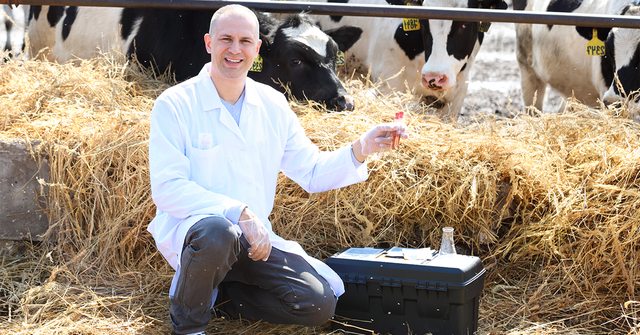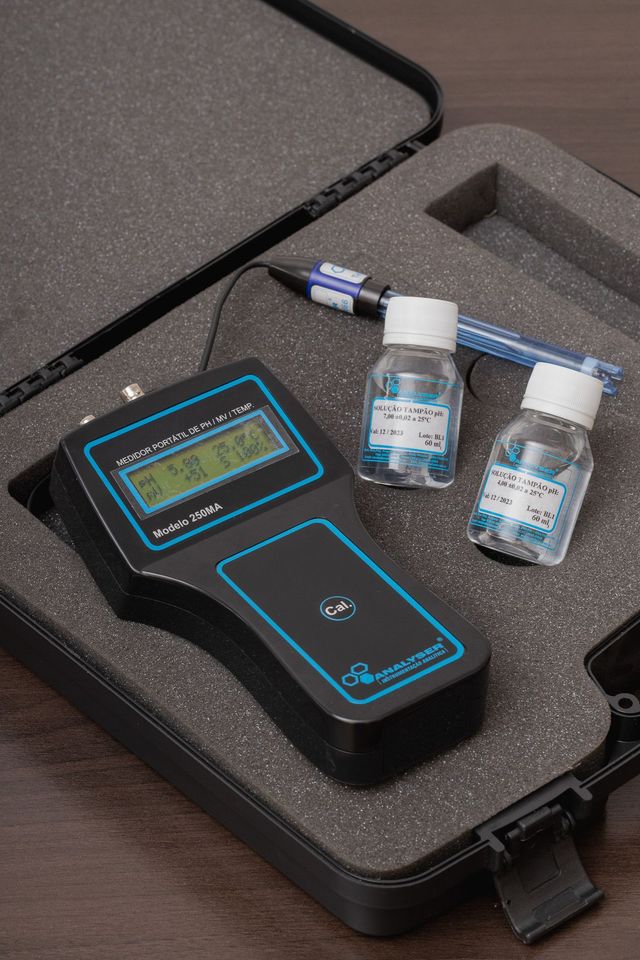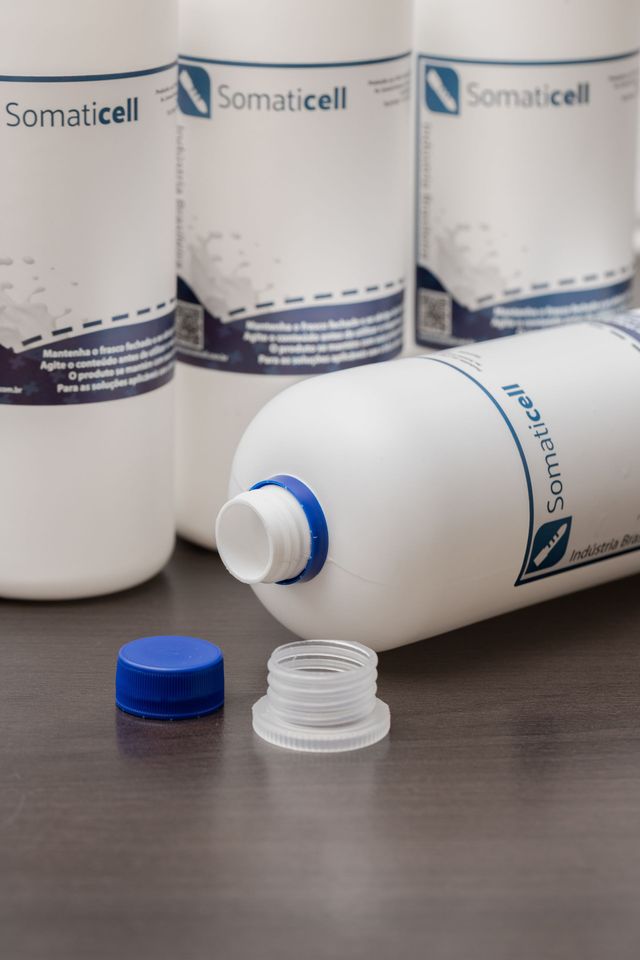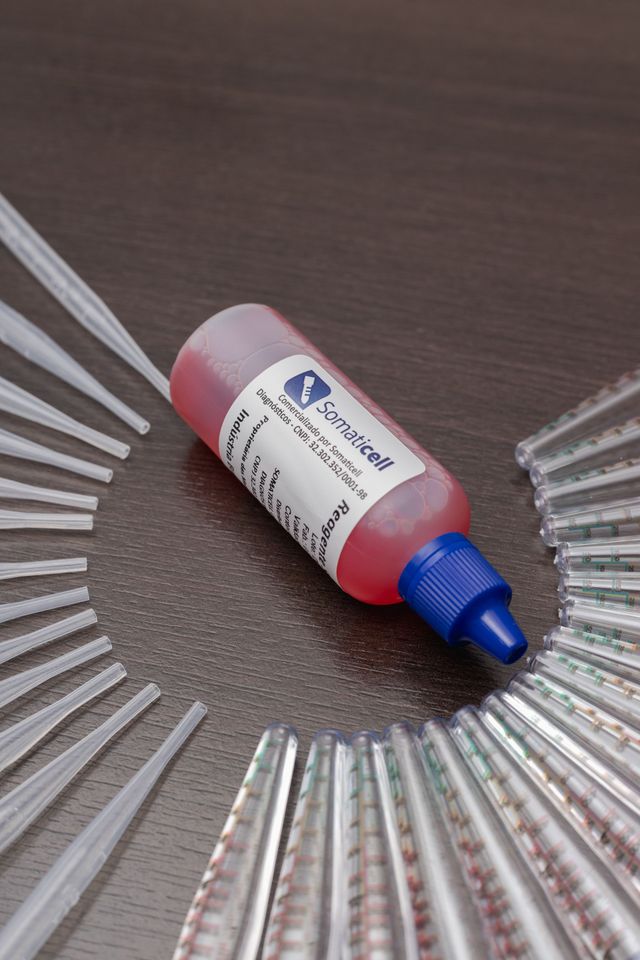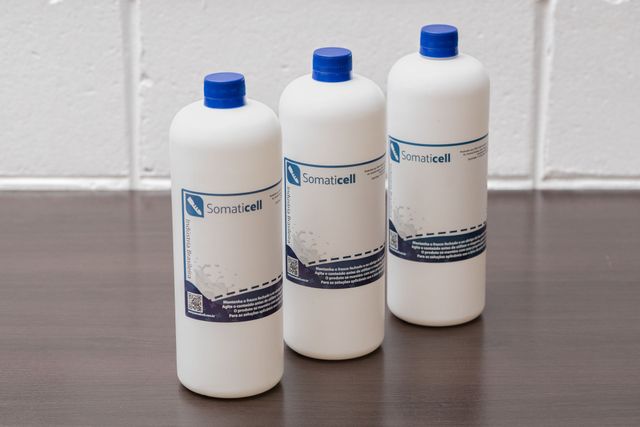Bovine mastitis caused by Non-Aureus Staphylococci (NSA)
ENA's are commonly traced in milk, skin and, recently, cow feces.
One of the families of pathogens that can cause bovine mastitis are the ENA (Non-Aureus Staphylococci). Often referred to as "opportunistic microorganisms," they live in areas where tissue is easy to penetrate.
In this article that we have prepared, we intend to approach this subject from the perspective of environmental contamination, dissolving all doubts on the subject. Learn about these bacteria so you can keep your farm free of mastitis infections.
What are ENA's?
One of the groups of bacteria that cause mastitis is called Non-Aureus Staphylococci (NSA).
Essas bactérias são de grande interesse porque são atualmente os microrganismos que mais encontramos em vacas e novilhas em rebanhos. Além disso, atualmente considera-se que eles são patógenos causadores de mastite bovina.
ENA's are normally found on healthy nipple skin and on the milker's hands.
They are often called "opportunistic microorganisms" because they live in areas where it is easy to colonize the breast canal and penetrate tissue.
Even though ENA's have been extensively studied lately, the role of these pathogens in relation to udder health is still unclear.
Por exemplo, considera-se os ENA's agentes secundários da mastite, pois se comparados aos agentes principais (Estafilococos Aureus), eles causam a mastite subclínica com menor média de CCS e praticamente não afetam a produção de leite das vacas infectadas.
However, some species can cause clinical mastitis and trigger different virulence factors, such as biofilm formation and antibiotic resistance.
How to prevent dairy farms from being affected by these bacteria?
A implementação de programas de controle de mastite bovina leva a uma redução na incidência geral de mastite clínica bovina na maioria dos rebanhos. Em alguns casos, a redução chega a 90%.
Most susceptible animals
Cows and heifers can be infected with ENA before calving. In lactation, ENA infection is often associated with increased somatic cell count (SCC), which causes economic losses due to the penalty in the price of milk.
The prevalence of bovine mastitis by ENA's is higher in primiparous animals.
They are generally mild infections and limited to small traces in the milk due to local changes in the udder. Many of these infections can even heal spontaneously.
But sometimes animals with intramammary infections caused by ENA's are observed with symptoms at a systemic level and are animals with persistent infections that can last for several months if measures are not taken.
How do they behave?
The microorganisms of the group Non-Aureus Staphylococci, ENA, formerly called coagulase-negative staphylococci, are currently one of the main groups of agents that cause mastitis worldwide.
It is possible to isolate this group of gram-positive bacteria in three main places: in milk, in the skin of the extremities of the teats and more recently ENA has also been isolated in the faeces of cows.
There are more than 50 different species of ENA's and it might be a mistake to look at their behavior as a group and not as individual species.
Although they do not consider it a group of bacteria as pathogenic as the main pathogens that cause mastitis, its pathogenicity and resistance to antimicrobial treatments varies depending on the species of ENA's.
Some researchers consider them to be secondary pathogens of the udder, but the importance of intramammary infections has been the subject of debate ever since.
On the other hand, other studies give them great importance in the development of mastitis and increase in the somatic cell count of affected cows.
Best methods of diagnosing mastitis
Once detected cows and mammary quarters with high cell counts, or that show signs of clinical bovine mastitis, milk samples must be collected for further processing in the laboratory.
Among other techniques, such as PCR identification, or microbiology, it is used as a diagnostic method to discover the pathogen that causes mastitis.
This methodology includes the usual sowing in specific growth media for the main etiological groups. They are incubated at 37 ºC, with readings at 24 and 48 hours. “Baird Parker Agar” is a specific culture for Staph. Allows to differentiate ENA and Staphylococcus aureus.
Non-Aureus Staphylococci usually cause mild infections and subclinical cases of mastitis in dairy cows.
Identification of the different ENA species is important to determine their pathogenicity and to develop specific management practices to prevent mastitis.
The problem is that identifying this group of organisms is difficult and expensive. This is why many laboratories do not include the identification of ENA species in routine procedures.
With the advancement of diagnostic techniques, mainly with the use of MALDI-TOF, instead of considering the ENA group as a whole, it is currently possible to identify at low cost the main ENA species in milk samples from cows with mastitis.
Mastitis in dairy cows caused by ENA's has the following characteristics:
- They are generally mild infections and cause subclinical cases of mastitis in dairy cows;
- Increase in CCS;
- May induce persistent clinical processes that do not respond to antibiotic treatment;
- The appearance of the milk is usually normal, but it can induce intramammary infections with changes in the milk;
- High prevalence in primiparous animals (especially around parturition);
- Higher incidence of new infections in the dry period of cows;
- The general condition of the animal is generally unaffected, nor are there severe systemic signs.
Best Treatments for Non-Aureus Staph
It is assumed that the spontaneous cure rate of ENA can generally occur. ENA responds much better to antimicrobial therapy than does Staphylococcus aureus. Furthermore, some ENA species are susceptible to antibiotics that are commonly used to treat mastitis.
Treatment by intramammary therapy and during the drying period is effective for controlling ENA infections.
The worldwide trend is that treatment of this class of bacteria with antibiotics will soon disappear as a routine aspect of dairy farming, and European regulations and pressure from the dairy industry will force producers to focus more on prevention as a cornerstone of a good management plan for bovine mastitis.
Incidence and prevalence of ENA infections: When are they greatest?
A incidência de novas infecções é maior durante o período seco da vaca e antes do parto. Portanto, o percentual de quartos infectados é alto no momento do parto. A maior prevalência de ENA's é em animais primíparas em vez de em vacas maduras.
Unfortunately, many producers mistakenly believe that their heifers are healthy, and the presence of mastitis in dairy cows is not noticed until calving. Heifers represent the future lactation and udder care is essential to ensure the profitability of dairy farms, throughout the productive life of the cows.
Although ENA infections are generally mild, it has also been shown to cause more severe and persistent processes, causing an increase in somatic cell count and a decrease in milk quality and production due to damage to the breast tissue.
What to do when you identify ENA on your farm
When most veterinarians receive the results of their milk samples, they often see that the ENA (Non-aureus Staph) result comes back positive. They tend to consider this positive result as something normal, without being aware that this type of infections can cause cases of mastitis in dairy cows.
The more we know about it, the more confident we will be when it comes to interpreting results. But mostly being able to decide whether an infection with this family of bacteria is a risk we want to take.
When does ENA come from the environment?
Species such as Staphylococcus epidermidis, Staphylococcus saprophyticus, Staphylococcus simulans and Staphylococcus warneri belong to the normal bacterial flora of breast skin, while other species such as Staphylococcus Xylosus and Staphylococcus Sciuri appear to come from the environment.
Staphylococci can colonize the skin of the udder and other parts of an animal's body. It was found that there are differences in the pathogenicity of different species of ENA's that are investigated and identified by molecular diagnostic techniques.
There are species with different antimicrobial susceptibilities and different ENA virulence factors isolated from mastitis samples in dairy cows.
Does environmental contamination increase the risk of non-aureus staphylococcal mastitis?
A recent study carried out by a research group from Belgium sought to expand knowledge about ENA in relation to the type of habitat (milk, breast skin and feces), which could facilitate understanding of the forms of transmission and the importance of different species. of ENA as a cause of mastitis. The study involved collecting milk, teat skin and faeces samples from 8 farms. Thus totaling a universe of about 1500 ENA isolates. Which were analyzed by the MALDI-TOF methodology to identify the species of Staphylococci.
The main results of this study indicated that out of a total of 22 different ENA species, it was possible to identify only 9 in all three habitats within each herd (milk, teat skin and faeces):
- Staphylococcus arlettae,
- Auricularis staphylococci,
- S. chromogenes, Staphylococcus cohnii,
- Staphylococci devriese,
- Staph equorum,
- S. haemolyticus,
- Staphylococcus hominis,
- Staphylococcus vitulinus.
The presence of these species in all habitats may suggest a possible role of feces as a source of teat contamination and, consequently, increase the risk of new cases of mastitis.
Regarding the milk samples, around 33% were positive for ENA, and in some farms this percentage reached 50% of the evaluated cows. When the distribution of the results of the ENA species was made according to the place of collection of the samples, the species that were isolated in samples of all the herds were:
- Milk: Staphylococcus chromogenes, S. haemolyticus, S. homini;
- Teat skin: Staphylococci chromogenes, S. haemolyticus;
- Feces: S. hominis, S. epidermidis, S. cohnii, S. haemolyticus.
Search results
94% of skin samples were positive for ENA, but some species only had ENA isolation in samples collected before milking (eg, Staphylococcus kloosii, S. lentus, S. saprophyticus), environment origin; or after milking (S. agnetis, S. epidermidis), which indicates that there was contamination of the breasts during milking.
These results indicate that the isolation of S. epidermidis in cows with mastitis was due to the transmission of this agent through contamination of milking equipment, which would indicate a contagious transmission.
On the other hand, in milk samples from cows with mastitis, Staphylococcus chromogenes and Staphylococcus haemolyticus were the two main ENA species identified.
Although it is not possible to consider them as definitive, the results of this study reinforce the idea that the ENA group presents large differences in distribution between species according to the habitat in which they are isolated, which may help to explain the role of different species. as a cause of mastitis or as the natural microbiota of the skin.
For example, the high frequency of isolation of Staphylococci chromogenes in cows with mastitis and in the breast skin of all studied herds is evidence of the high adaptability of this species to the udder environment and as a cause of mastitis. On the other hand, Staphylococcus equorum seems to adapt more to the environment. While Staphylococcus haemolyticus presents an opportunistic profile. Because it is possible to find it in all studied habitats, besides it can also cause mastitis in dairy cows.
Do you know if you have ENA's on your farm? Not yet?
Remember that the more you know about the subject, the more prepared you will be to fight it. So, the first step is to find out what is stopping you from reaching your goals. This in terms of milk quality also means controlling bovine mastitis.
Para ajudá-lo a fazer exatamente isso, a
Somaticell tem exatamente a solução que você precisa. Temos o
método mais moderno para diagnóstico bem como controle da mastite bovina, que pode ser feito de maneira simples e rápida.

Conheça nosso App
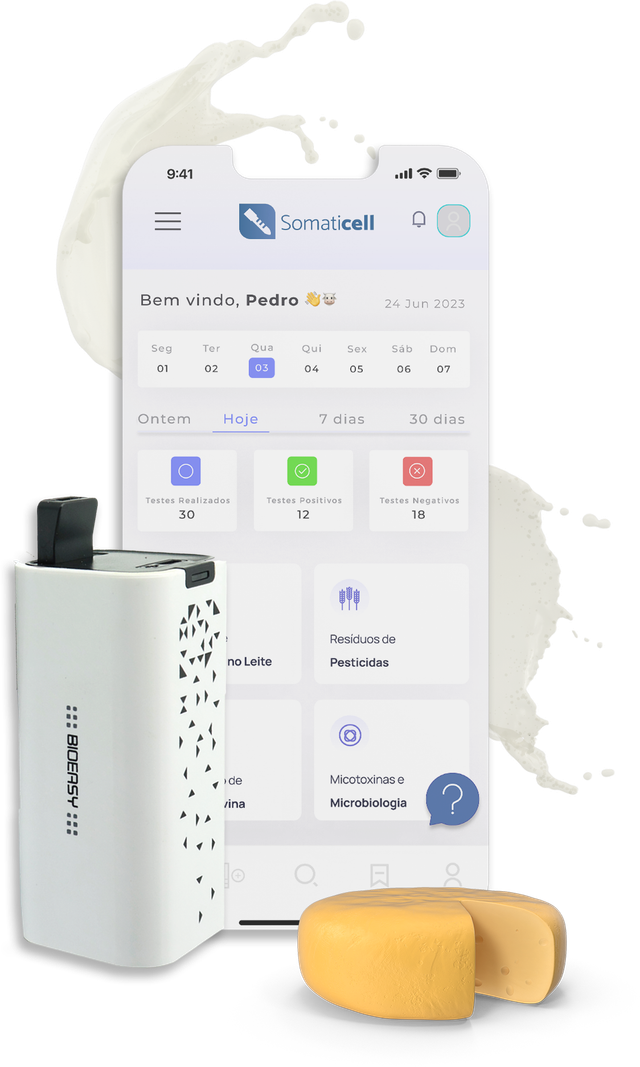
Our Educational Videos
Somaticell on Social Networks


